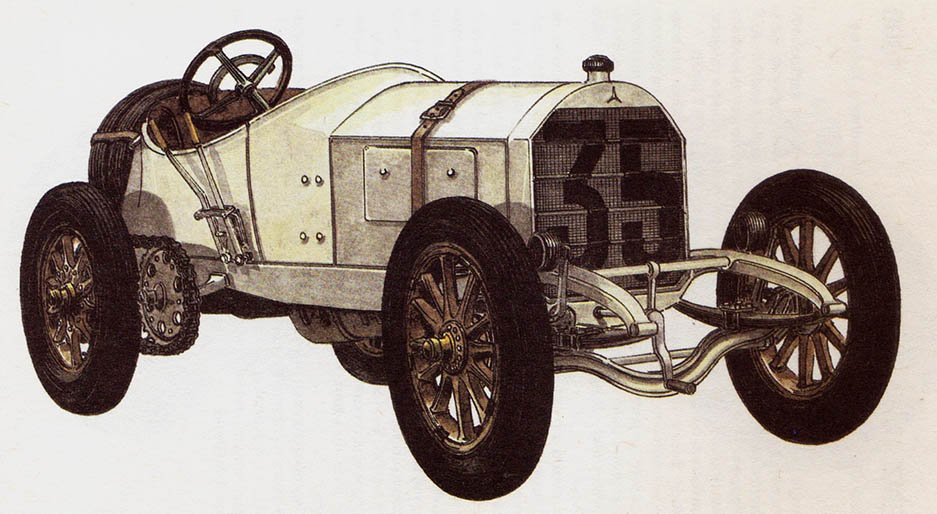MERCEDES – year 1908
Daimler Motor Company, Stuttgart, Germany.
W 1908 of the year, the French automobile club issued the new Grand Prix ACF regulations, in which the end face of all engine pistons was limited to 750 cm2, which resulted in a different bore diameter for the six engines- and four-cylinder. The minimum weight of the vehicles is also specified – 1100 kg. It stopped at the starting line in Dieppe 48 cars with an engine capacity of 9.5-14 liters. Vehicles with engines equipped with a camshaft in the cylinder head have already appeared, so with OHC timing. The ban on the use of interchangeable wheels resulted in, that Napier and the Edge rider did not take part in the races. Racing was dominated by German cars, which took the first three places, and also the fifth and the seventh. The winning Mercedes reached the finish line in time 6:55:43,8, and was led by Christian Lautenschlager, a Daimler test driver, which has reached the average speed 111,1 km/h. The car had a water-cooled four-cylinder engine with a cylinder diameter 155 mm and piston stroke 170 mm, which gave the total capacity 12,8 liter. The valve system is solved by using the so-called. F-head, i.e. the intake and exhaust valves moved opposite each other. Camshafts are located on both sides of the crankshaft. The engine was making power 99,3 kW (135 KM) by 1400 RPM, allowing you to reach maximum speed 166,5 km/h. A surprising fact, that cars so fast only had brakes on the rear wheels. To reduce the unsprung weight, Daimler used chain-driven rear-wheel drive in the winning Mercedes nevertheless, that most racing cars already had drive shafts.

Daimler Motor Company, Stuttgart, Germany.
The poor surface of the Grand Prix track at Dieppe resulted in, that the mechanics in the pitches still had to be prepared to change the tires, and there was not a single wheel left in the Mercedes pit. Mercedes also triumphed in the speed achieved, because the rider Salzer broke the lap record, getting an average speed 126,5 km/h. Christian Lautenschlager's winning Mercedes has been preserved to this day and is in private collections in the USA.